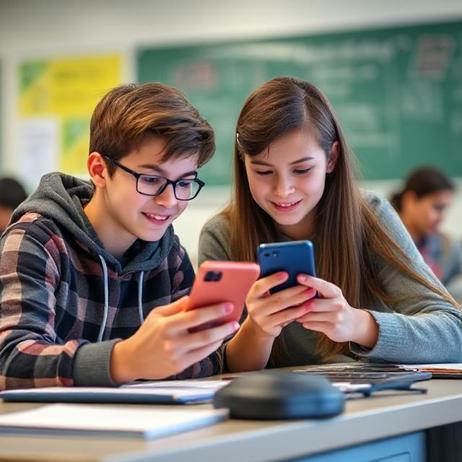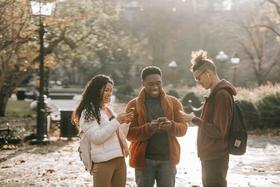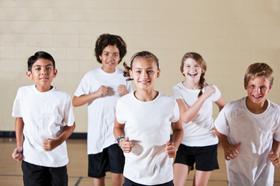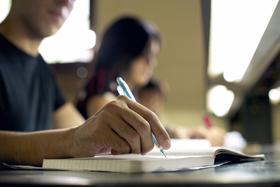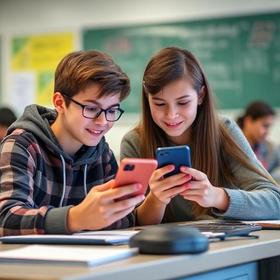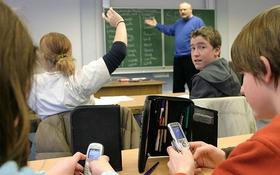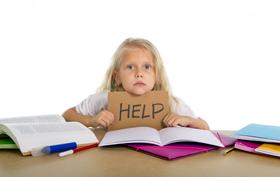The Impact of Social Media on Students
In the past decade, social media has become deeply woven into students’ everyday lives, both inside and outside the classroom. As we move into 2025, understanding the impact of social media on students—academically, socially and psychologically—is essential for parents, educators and school leaders. This article updates the original analysis with current data, evolving policies and expert commentary, while retaining the previous structure for clarity and continuity.
Introduction
The term “social media” now covers everything from short-form video apps like TikTok, to image-sharing networks such as Instagram, to collaborative platforms used by students and schools. The latest estimates show approximately 5.24 billion people worldwide are active on social media in 2025, up 4.1 % from the previous year.
For students, social media represents both potential advantages (such as connected learning and peer collaboration) and clear risks (including distraction, mental-health concerns and reduced focus).
The remainder of this article explores the current state of social media use among students, its academic implications, behavioural and mental-health effects, evolving school policies, strategies for positive use, and recommendations for families and educators.
Current Usage Patterns
Recent studies indicate that social media usage remains high among young people and students. Global figures show that 63.9 % of the world’s population uses social media, with an average daily time of about 2 hours 21 minutes as of February 2025. Smart Insights
For school-age students, access to digital devices is nearly universal. For example, in a 2025 report from the Pew Research Center, 95 % of teenagers had access to a smartphone, 88 % had access to a computer and 70 % to a tablet. Usage of specific platforms is also relevant. According to demographics data:
TikTok: ~2 billion monthly active users, with the largest age group now 25-34, though younger users remain significant.
Instagram: ~2 billion users globally, with 18-24 being the largest age group.
This means that many secondary- and high-school students are active on platforms where the content tempo and format may differ considerably from classroom-learning expectations.
Academic Performance: Benefits and Challenges Benefits
On the positive side, social media and related digital platforms can enhance students’ learning experience when used purposefully. For example, some research shows that 83 % of 18- to 29-year-olds use social media for learning purposes, and that there are measurable improvements in areas such as language acquisition or collaborative tasks.
In a more recent high-school context, a survey conducted in the Philippines found that for 60 % of seniors, social media improved communication and social skills, and there was a significant correlation between some level of social-media use and high academic performance (60.3 % of respondents achieved “Outstanding” levels).
These data suggest that when social media is integrated into study habits—such as peer discussions, quick content access and collaborative groups—it can support academic goals.
Challenges
However, the balance is delicate. Excessive or off-task use of social media is strongly correlated with negative academic outcomes. A 2025 literature review emphasised the nuanced relationship between usage habits and performance: “excessive use … may have negative effects on academic performance, including distraction, low motivation, and reduced study time.”
In the U.S., data from the National Center for Education Statistics (NCES) indicate that 77 % of public schools prohibit students from using cell phones during class time. 53 % of school leaders cite negative impacts of phone use on academic performance; even higher proportions cite mental-health and attention-span effects.
Another recent study from Walter Sisulu University found 84.5 % of surveyed students spent more than four hours daily on social media, and 39.4 % agreed it had a negative impact on assignment completion. arXiv
These findings point to key mechanisms through which social media may hinder academic performance: multitasking, diminished focus, procrastination, reduced study time and disrupted sleep.
Behavioural and Mental-Health Impacts
Social media’s influence extends beyond classroom performance into behaviour, attention, sleep and mental-health domains.
A 2025 article on K-12 students notes concerns such as shortened attention spans (sometimes labelled “TikTok brain”), higher anxiety and depression levels, cyberbullying and misbehaviour tied to social-media content and peer pressure.
Moreover, an article from Education Week reports that educators are seeing the consequences in real time: “social media fuels fights and bullying … viral dares and trends … students’ inability to stop scrolling at night means they’re missing out on sleep crucial to their learning and mental health.” Education Week
In terms of policy viewpoints, a poll conducted in February 2025 found that 81 % of likely voters in Missouri (as a proxy for national sentiment) favour prohibiting students from accessing social media via school internet except when teacher-authorised.
The behavioural and mental-health impacts are therefore intertwined with academic performance: disrupted sleep, lower self-esteem, anxiety or depression, and attention deficits all undermine students’ capacity to engage successfully with school tasks.
School Policies and Institutional Responses
Schools and districts are responding to these challenges. The NCES data mentioned earlier show widespread phone-use bans during class time.
In a forthcoming study published in 2025, researchers analysed 38 secondary-school policies in Australia that regulate how social media is used by students. The conclusion: policy alone is not sufficient; effective frameworks require consistent oversight, education and alignment with student wellbeing.
Some jurisdictions are going further. For example, a proposed U.S. federal bill—the Kids Off Social Media Act (S. 278)—would ban users under 13 from social-media platforms, prohibit algorithmic recommendations to under-17s and ban social media in schools.
These policy developments reflect a shift from seeing social media as purely optional to treating it as a structural issue within educational settings.
Positive Strategies for Schools and Students
Given both the promise and pitfalls of social media, it is essential to adopt strategies that harness benefits while limiting harm. Below are recommended practices for schools, teachers, students and parents:
For schools and educators:
Integrate social-media tools with clear pedagogical intent rather than allowing unrestricted access. For instance, use dedicated channels for curricular groups and peer feedback.
Develop explicit guidelines for responsible use of social media and smartphones; train students on digital literacy, misinformation and healthy habits.
Monitor outcomes regularly, including student attention, sleep patterns and behaviour, rather than simply implementing bans.
Foster collaboration between educators, mental-health professionals and IT staff to align policies with student wellbeing.
For students and families:
Set clear boundaries around social-media use: designate "off-screen" hours, especially before bed, to protect sleep quality.
Use social media actively rather than passively: join academic groups, follow education-related channels and use apps to collaborate on projects rather than endless scrolling.
Establish “device-free zones” when studying or during family time, to reduce distractions and promote focus.
Discuss the mental-health implications of heavy social-media use, encouraging reflection on how time spent online affects mood, self-esteem and productivity.
Real-World Example: A Boarding School Approach
At a boarding-school campus (e.g., a member institution featured on BoardingSchoolReview.com), the administration revamped its social-media policy for the 2024-25 academic year. They introduced evening “digital-detox” hours between 9 p.m. and 10:30 p.m., during which students placed phones in locked pouches. Simultaneously, teachers curated weekly social-media challenges: students created short educational videos summarising key concepts from their classes and posted them on a private school channel.
The result: the school reported fewer sleep-related issues, improved morning alertness and higher completion rates for study-hall homework. This illustrates how combining structure (limited access) with constructive use (educational social-media tasks) can yield positive outcomes.
Looking Ahead: Key Trends in 2025 and Beyond
Several developments in 2025 and beyond will shape how social media impacts students:
Short-form video dominance. Platforms like TikTok continue to dominate, with 47 minutes average daily usage for certain age groups. This shift requires educators to adapt content delivery to shorter-attention formats.
Increasing regulatory pressure. As seen with legislation (e.g., Kids Off Social Media Act) and district-level bans, regulatory frameworks will become more common.
Rise of institutional social-media growth. Educational institutions are reporting TikTok follower growth of 2.28 % weekly in Q1 2025 — double that of Facebook or Instagram in the sector. Social Media Dashboard Schools that leverage these platforms thoughtfully stand to engage students more effectively.
Emphasis on entire-life digital wellness. Future success will depend less on banning phones alone, and more on fostering balanced digital lifestyles that integrate social media purposefully into learning and life.
Conclusion
The impact of social media on students in 2025 is multifaceted. On one hand, these platforms offer unprecedented access to learning resources, peer collaboration and community. On the other hand, they pose serious risks to attention, academic performance, behaviour and mental health when used without discipline.
For parents, educators and school leaders, the key is not to demonise social media, but to guide and structure its use. Schools must implement thoughtful policies, foster digital literacy and integrate social-media tools productively. Students and families must adopt mindful habits, balance screen time and prioritise sleep, focus and wellbeing.
For boarding- and private-school settings (see BoardingSchoolReview.com for featured institutions), the imperative is clear: social media will not disappear. It is our job to ensure students learn to navigate it wisely, leverage its benefits and avoid its distractions. By doing so, we set the stage for more focused learning, healthier behaviour and a stronger academic journey.

